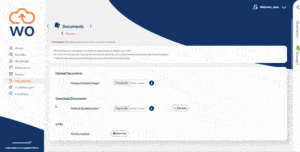Requiring incoming workers to print off and scan documents is causing negative experiences for new starters, particularly over the last 12 months.
This was one of the key takeaways from a recent webinar hosted by Hireful and featuring the insights of Webonboarding’s general manager, Simon Connell.
The session looked at the hiring challenges posed by the COVID pandemic. Plus some practical ways to strengthen and future-proof the employee onboarding process.
The most significant change has been managing the rapid switch to remote work – for both HR/recruitment teams and new hires. With limited access to central offices, posting paper documentation has often been replaced with an email-based approach.
With many households not having printers, it creates a slow, frustrating and inefficient experience when people are required to print and scan paperwork that has been sent as email attachments.
But this method can be a slow, frustrating and inefficient process. Why? Many households do not have printers. So when people are required to print and scan paperwork, it becomes problematic – and can even lead to onboarders dropping out of the process.
The problem with print outs
The webinar featured an interview with a HR professional from the medical sector who spoke about the potential damage this can cause to the experience of new starters.
“Last year changed everything, people need to be able to do absolutely everything at home. They don’t want to have to be forced to print or scan documents.
“There’s nothing worse for candidates when you join a company and get a massive pack of papers through the post or an email with 18 attachments to print and fill out.
“The user experience is absolutely vital because you’ve put so much effort into recruiting somebody and then if onboarding is a horrendous process, it really impacts their psychological contract and the feelings they have towards your organisation.
“You don’t want to invest time and money into somebody who’s amazing, for them to have a bad experience in the first few months and then question whether they want to be in your organisation.”
This is important because onboarding experiences are key: a survey by Webonboarding in 2019 found that 46% of onboardees have had negative joining experiences, causing 11% to drop out of the process.
How to create effective onboarding in 2021 – and beyond
During the webinar Simon Connell offered a solution to the paper-based problem. He urged companies to adopt a proactive approach to putting tools and processes in place that can manage a more demanding hiring environment – and the evolving nature of onboarding: Adapting to remote work and operating with reduced resources.
Cloud-based systems such as Webonboarding allow organisations to achieve more with less by delivering a fully paperless and automated process. Contract signing is handled digitally and all documentation is tracked in real-time via a virtual dashboard.
It removes the need for emails and multiple attachments containing paperwork that must be printed and scanned. New hires are able to instantly access all of the information they need through a mobile-compatible online portal.
Improved communications and a user-friendly process transforms the experience for new starters and helps HR teams to maintain a fast and fully compliant administrative approach without the need for a physical office or any manual processing of information.




